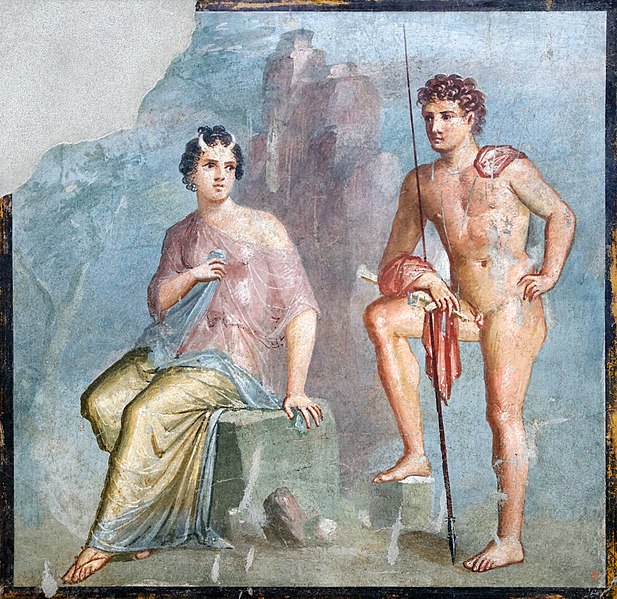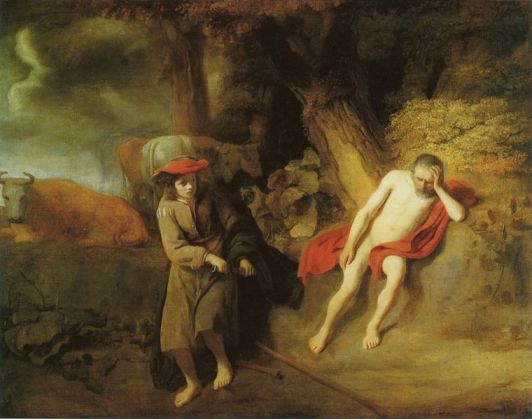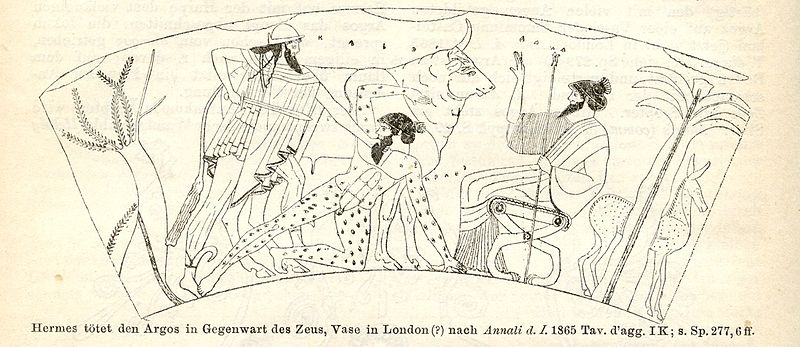Ah, Argus Panoptes! The very name conjures images of a creature with a hundred eyes, forever vigilant. If you’ve ever been intrigued by the labyrinthine world of Greek mythology, you’ve likely stumbled upon this fascinating figure.
Argus Panoptes Key Facts
| Origin | Greek Mythology |
| Creator | Gaia |
| Defeated by | Hermes |
| Habitat | Argos, Greece |
| Other names | Panoptes |
| Roman name | Argus Panoptes |
| Associated with | Hera, Io |
| Symbols | Eyes, Peacock |
Name and Etymology
The name “Argus Panoptes” is as intriguing as the creature itself. “Argus” is derived from the ancient Greek word “Argos,” which means “bright” or “shining.” It’s a fitting name for a creature whose eyes never dim. “Panoptes,” on the other hand, translates to “all-seeing,” emphasizing his role as an eternal watcher.

In Roman mythology, the name remains unchanged, a rarity considering the Romans often had their own versions of Greek deities and creatures. This suggests the significance and uniqueness of Argus transcended cultural boundaries.
Various epithets and aliases have been attributed to Argus over time. He’s sometimes simply referred to as “Panoptes,” emphasizing his all-seeing nature. These names and titles serve not just as identifiers but as a testament to his multifaceted role in myths.
Argus Panoptes Origin and Creation
Born to Gaia, the Earth Mother, Argus was a creature destined for greatness—or perhaps, notoriety. His creation wasn’t accidental; he was designed to be a guardian, a watcher, someone who could see all and miss nothing.
The purpose behind his existence was clear: to serve as a guardian for sacred places or important figures. His most famous stint was as the protector of Io, a nymph transformed into a cow, on Hera’s orders. His role was pivotal, and his existence was not just a random act of creation but a well-thought-out plan by the gods.
Argus’s early existence is shrouded in myths and legends, each more fascinating than the last. From guarding the heifer Io to keeping watch over other mythical places, his life was anything but ordinary. His creation and the events that followed set the stage for some of the most captivating stories in Greek mythology.
Depiction And Characteristics
Imagine a being with a hundred eyes, each one as vigilant as the last. That’s Argus for you. His eyes weren’t just ornamental; they were functional, capable of independent movement and perception. This made him the perfect guardian, as he could literally keep an eye on multiple things at once.
Symbols often associated with Argus include the peacock, a bird renowned for its many “eyes”—the eye-like patterns on its feathers. This association is more than mere coincidence; it’s a symbolic representation of his all-seeing nature and the beauty that comes with such a unique ability.
Argus Panoptes Nature and Behavior
Argus was not just a creature of sight but also one of insight. He was wise, discerning, and incredibly focused. In myths, he’s often portrayed as stoic and unyielding, characteristics befitting a guardian appointed by the gods themselves.
His behavior was a reflection of his duties. He was not cruel but was unyielding when it came to fulfilling his responsibilities. The ancient Greeks viewed him as a creature of great importance, a being whose existence served a higher purpose.
Argus Panoptes Abilities
Argus’s abilities went beyond mere physical sight. He possessed an uncanny sense of perception, allowing him to see through deceptions and illusions. This made him nearly invincible and incredibly difficult to bypass, even for the most cunning of gods and heroes.
His most remarkable ability, however, was that not all of his eyes would sleep at once. While some eyes rested, others remained open, making him the ultimate guardian. This unique trait made him nearly impossible to defeat, and it took the cunning of Hermes to finally bring him down.
Argus Panoptes Symbols or Associations
The most obvious symbol associated with Argus is the eye, representing vigilance and omnipresence. However, he’s also closely associated with the peacock. According to some myths, after his death, Hera transferred his eyes to the peacock’s feathers as a tribute to his service.

Another less-known association is the Argus flower, also known as the “hundred-eyed flower.” This flower is said to symbolize watchfulness and is often used in stories and art to represent Argus’s ever-watchful eyes.
Myths about Argus Panoptes
The life of Argus Panoptes is a rich tapestry of myths and legends, each one adding a new layer to his complex character. Let’s delve deeper into two of the most captivating stories that feature this all-seeing guardian.

The Guarding of Io
Argus’s most famous myth is undoubtedly his role in the tale of Io, a beautiful nymph who caught the eye of Zeus. To protect her from his jealous wife, Hera, Zeus transformed Io into a cow. However, Hera was not easily fooled. She appointed Argus to guard Io, ensuring that Zeus couldn’t reverse the transformation without being caught.
For months, Argus kept a vigilant watch over Io. He was stationed in Argos, and his hundred eyes made escape seem impossible. His duty was unwavering, and he thwarted every attempt by Zeus to rescue Io. The nymph was confined to her bovine form, grazing in the fields but always under the watchful eyes of Argus.
However, even the most vigilant guardian has his limits. Hermes, the messenger god, was dispatched by Zeus to rescue Io. Employing a mixture of cunning and divine power, Hermes played a lullaby on his lyre, putting all of Argus’s eyes to sleep. Once the guardian was incapacitated, Hermes slew him, freeing Io and marking the end of Argus’s watch over her.
The Watcher of the Golden Fleece
Another lesser-known but equally fascinating myth involves Argus as the guardian of the Golden Fleece. The fleece was a symbol of divine authority and kingship, and it was kept in a sacred grove, protected by a dragon. However, for a brief period, Argus was also appointed as its guardian, adding another layer of security.
In this role, Argus’s vigilance was again put to the test. Heroes and adventurers sought the fleece, but none could bypass the all-seeing guardian. His eyes, ever watchful, kept intruders at bay, reinforcing the fleece’s reputation as an unattainable prize.
It was only through divine intervention that the fleece was eventually stolen. In some versions of the myth, it’s suggested that a hero managed to distract Argus, while in others, it’s implied that the gods themselves had to intervene to retrieve the fleece. Either way, the story underscores the near-impossibility of bypassing Argus’s watchful eyes and adds another layer to his role as a divine guardian.
These myths not only showcase Argus’s abilities but also highlight his unwavering commitment to his duties. Whether guarding a transformed nymph or a symbol of divine power, Argus Panoptes remains an enduring figure, a testament to the rich and complex world of Greek mythology.
Representations Of Argus Panoptes In Art
Argus has been a popular subject in art, often depicted in the act of guarding Io or keeping watch over sacred places. One of the most famous artworks featuring him is “Mercury and Argus” by Diego Velázquez, where Argus is shown in a moment of vulnerability, just before his demise.

Another notable representation is in the form of sculptures, where his many eyes are intricately carved to capture his all-seeing nature. These artworks not only celebrate his unique abilities but also serve as a testament to his enduring legacy.
Mentions in Ancient Texts
Argus is frequently mentioned in ancient texts, solidifying his place in Greek mythology. One of the earliest mentions is in the “Library” by Apollodorus, a compendium of myths and legends. Another significant mention is in Ovid’s “Metamorphoses,” where the tale of Io is elaborately narrated.
“Argus, the Earth-born, whom the Earth supplied With eyes, endued him with a hundred sight” – Ovid, Metamorphoses
Frequently Asked Questions
Hermes, the messenger god, was the one who managed to defeat Argus.
He was often stationed in Argos, Greece, fulfilling his duties as a guardian.
The peacock is associated with Argus because, after his death, his eyes were transferred to the peacock’s feathers by Hera.
Argus was a monster, created by Gaia and appointed by Hera for specific guardian duties.
His only weakness was that he could be lulled into a deep sleep, a vulnerability exploited by Hermes.
Yes, his name and role remain largely unchanged in Roman mythology, emphasizing his significance.
Featured Image Credit: Wilhelm Heinrich Roscher, Public domain, via Wikimedia Commons

